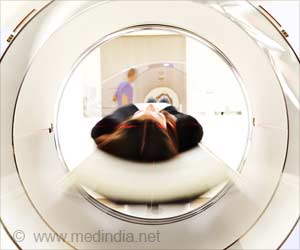The procedure may facilitate safe and extensive resection of infiltrative brain cancers and consequently lead to improved outcomes.

Researchers at Johns Hopkins University have reported on a new optical coherence tomography (OCT) probe that may provide surgeons real-time identification of cancerous tissues.
Previously, the fact that tumors tend to be denser was the basis for many designed devices, but the Hopkins team focused on brain cancer cells’ lack of myelin sheaths as the marker that influences how light passes through them.
Having identified how brain cancer cells uniquely scatter light, the researchers wrote a computer program that spots the relevant parameters within OCT scan data.
The results come back as a 3D color map of the tissue under the probe, red colored areas pointing to cancerous regions while the green being healthy material to be preserved.
Source-Medindia















